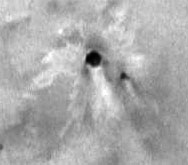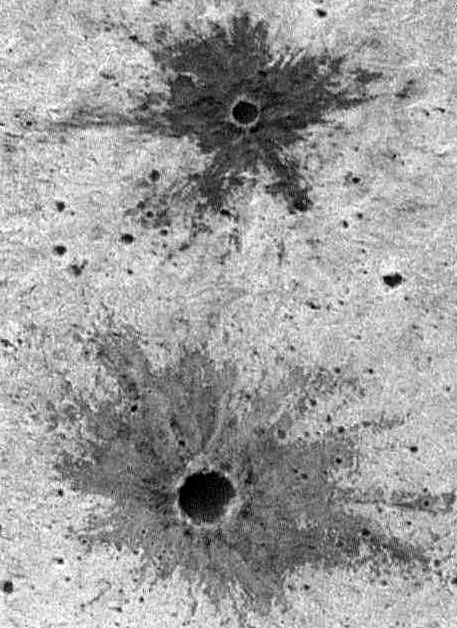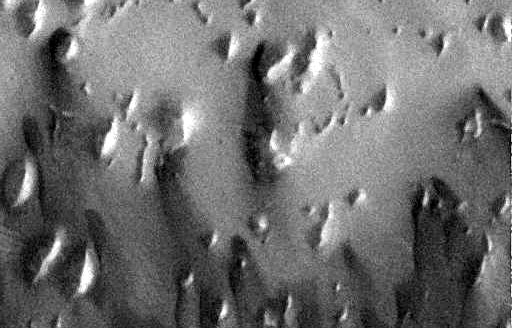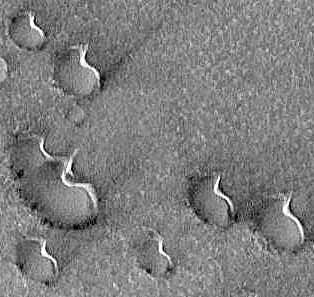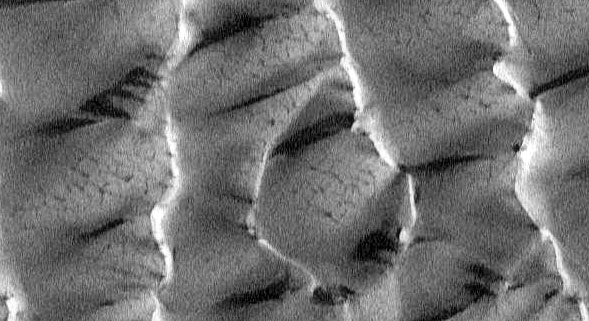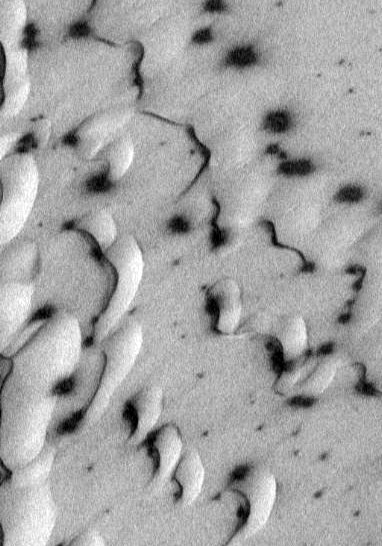
Source: 10409
Comment: Most bright and most dark area are close together. If the black was created by a water-soil reaction, the bright area could be salt evaporites from the vaporized water. One crater is active watering, the two others inactive at the moment

